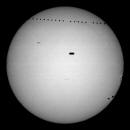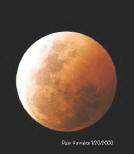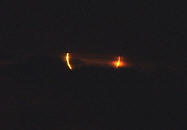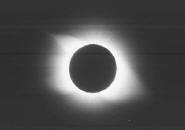|
| |
The Mars Year - 2003
- During August 2003, Mars, the Red Planet, will be closer to Earth than it has
ever been before in recorded history. On the date of closest approach, August
28, Mars will be only 55.8 million kilometers from Earth, little more than 1/3
an Astronomical Unit. (An Astronomical Unit, or AU, is the average
distance from the Earth to the Sun, about 165 million kilometers.)
This will be the closest together Mars and Earth have been in the last
100,000 years!
|

|
Spending Green to See Red Planet
 As the Earth and Mars get chummy, newbie astronomers are hitting the
stores in droves to purchase optical equipment. Although new tech
makes it easy to find what you're looking for, the pros advise to try
before you buy. By Suneel Ratan of Wired News.
As the Earth and Mars get chummy, newbie astronomers are hitting the
stores in droves to purchase optical equipment. Although new tech
makes it easy to find what you're looking for, the pros advise to try
before you buy. By Suneel Ratan of Wired News.
|
 |
|
Transit of Mercury -
May 7, 2003
- The Transit of Mercury on May 7, 2003, was seen in its entirety across
Asia, Africa and Europe, and at its end at sunrise in easternmost North
America and South America. Most of North America was not able to see
this transit.
- There are approximately 14 Transits of Mercury in a century. This
transit is the first of the 21st Century.
|
 |
Lunar Eclipse - May 15, 2003
- A Total Lunar Eclipse will occur on Thursday, May 15, as the Full
Moon passes through the darkest part of the Earth's shadow, called the
umbra. Totality starts about 10:15 p.m. CDT. During the eclipse, the
Moon will appear red or other sunset-like colors, an effect that is
caused by sunlight that is filtered and bent by the Earth's atmosphere
before it reaches the Moon.
- Observers who use small telescopes or binoculars will be able to
view individual craters, peaks and other formations on the moon as
they pass through the Earth's shadow. The Full Moon, which rises at
sundown, will be above the eastern horizon in the zodiacal
constellation of Libra as it is eclipsed. Fortunately, this eclipse is
early in the evening when most people are up. Let your kids stay up to
see this rare astronomical event.
-
http://sunearth.gsfc.nasa.gov/eclipse/extra/TLE2003May15.html
|
 |
Annular Eclipse - May 31, 2003
- See an annular eclipse of the sun on May 31, 2003,
in Iceland. Complete details for the eclipse can be found at
the NASA eclipse web site: http://sunearth.gsfc.nasa.gov/eclipse/ASE2003/ASE2003.html
- This eclipse is a long shot weather-wise, but if
luck is with you, you'll see a dazzling "Ring of Fire" just above the
horizon after sunrise on May 31!
- You can find loads of information about Iceland at
http://www.iceland.org
|

|
Total Eclipse - November 23, 2003
- If the cold did not get you down up in Iceland, you could always trek
to Antarctica for the November 23 Total Eclipse of the Sun.
Partial Phases are viewable by observers from Australia to Argentina
and Chile, but for greatest effect, fly to Wilkes Land Antarctica for
2 minutes of totality.
- Complete details for this eclipse can be found at the
NASA eclipse web site:
http://sunearth.gsfc.nasa.gov/eclipse/TSE2003/TSE2003.html
|

|
|